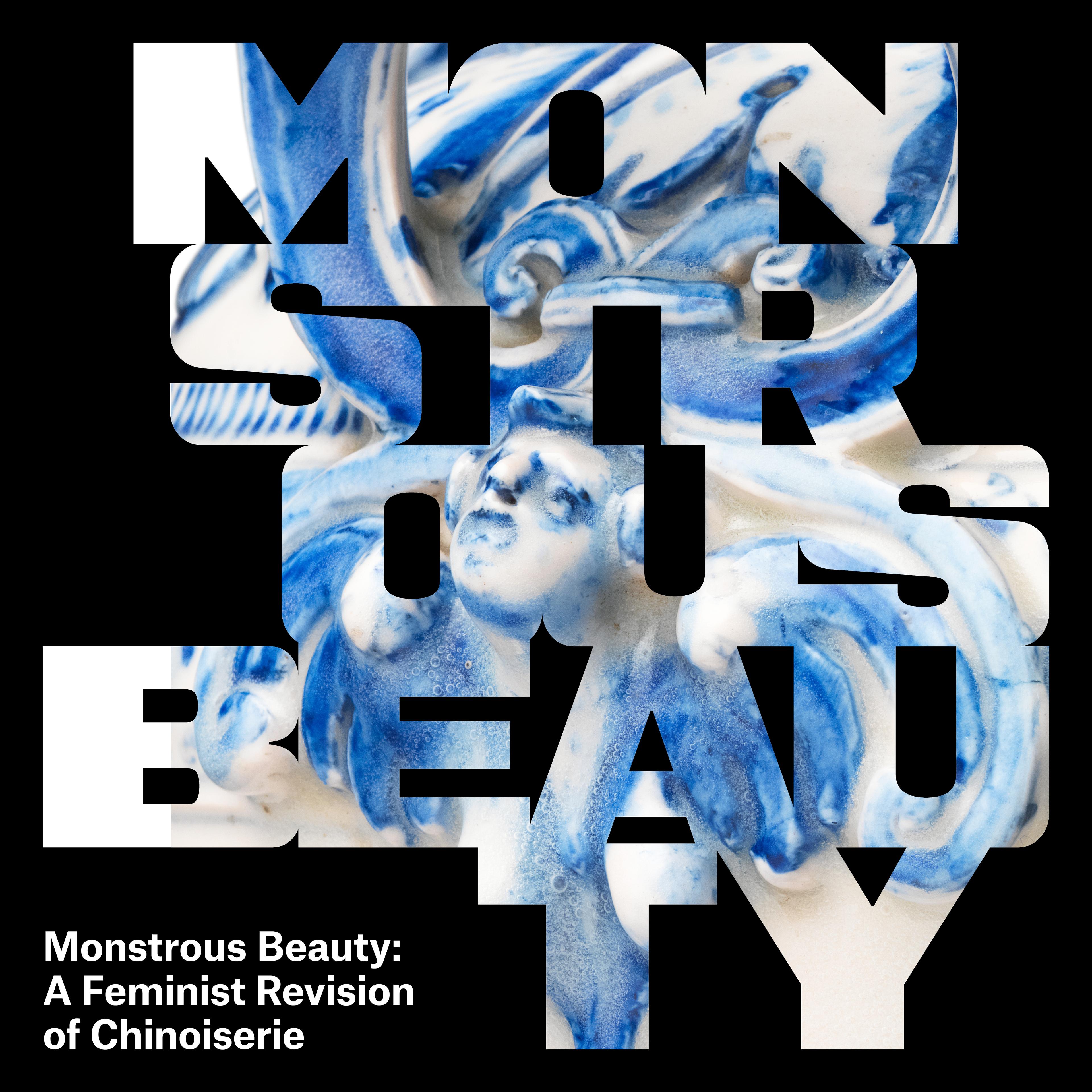Audio Guide
Hear about the provocative history of porcelain with Michelle Zauner, frontwoman of Japanese Breakfast, as your guide.
This tour runs approximately 45 minutes.

501. Introduction
Woman with a pipe, ca. 1760–80
MICHELLE ZAUNER (NARRATOR): Picture a white porcelain vase, smooth and glossy, with flowers, birds, and women painted in cobalt blue.
This decorative style—known as Chinoiserie—originated hundreds of years ago in Europe, where elite collectors developed an obsession with porcelain and fantasized about its site of origin: China.
By the 1700s, European-made vases, plates, and teacups depicted invented visions of the East—natural landscapes cast on artificial surfaces. They were as colorful and intricate as they could be grotesque especially when they featured depictions of Asian women.
My name is Michelle Zauner, and I’ll be your guide through Monstrous Beauty: A Feminist Revision of Chinoiserie. Together, we’ll consider the longstanding European and American obsession with this ceramic material, the ways it has shaped women’s identities across race and class, and how contemporary artists are recasting its meanings. Along the way, we’ll meet mothers, monsters, cyborgs, and starlets. And we’ll hear from artists Patty Chang and Jen Liu, scholars like Anne Anlin Cheng and Patricia Ferguson, and the curator for this exhibition: Iris Moon.
IRIS MOON: What you’re looking at is a reverse-painted mirror from around 1760. And what it depicts is a woman in Manchu dress. And she’s wearing an absolutely fabulous ermine cape while there is a blue and white vase holding peonies behind her on a table. And she’s looking back at you.
This is an object that we acquired for the European Sculpture and Decorative Arts Department, which is where I work at The Met. And here I was in the storeroom, looking at this mirror, and it was quite powerful to see a space of reflection being occupied by this incredibly assertive, incredibly self-confident woman—someone who looked like me.
It was a moment where I saw myself in the mirror and realized that Chinoiserie could be a gateway into thinking about otherness and thinking about difference. That a mirror isn’t just about seeing your own reflection, but it’s also about seeing other people’s projections of you.
ZAUNER: Together, we’ll learn that porcelain wasn’t always polite beauty: it could be monstrous, too.
Playlist
Iris Moon
Iris Moon joined the department in 2017 and is responsible for European ceramics and glass. Her research on European decorative arts and architecture has been supported by the Decorative Arts Trust, the Paul Mellon Centre, and the Clark Art Institute. Alongside curatorial work at The Met, where she is currently organizing an exhibition on Chinoiserie, women, and the porcelain imaginary, she teaches at The Cooper Union. She is the author of Melancholy Wedgwood (2024), Luxury after the Terror (2022) and co-editor with Richard Taws of Time, Media and Visuality in Post-Revolutionary France (2021). She earned her PhD at Massachusetts Institute of Technology.
Academia.edu: Publications by Iris Moon
Jen Liu
Jen Liu is a visual artist working in video, painting, sculpture and performance, on topics of Asian diasporic women, material flows in the global economy, and reviving archival artifacts.
Photo credit: Adam Murphy
Patricia Ferguson
Patricia Ferguson is a ceramics historian, former curator at the British Museum and the Victoria & Albert Museum, and honorary advisor on ceramics to the National Trust.
Patty Chang
Patty Chang is an artist working in performance, video, writing, and installation. She is also professor of art at the University of Southern California.
Photo credit: Amy Sadao
Anne Anlin Cheng
Anne Anlin Cheng is a literary scholar and cultural theorist and professor of English at Princeton University. She is the author most recently of Ordinary Disasters: How I Stopped Being a Model Minority (2024) and Ornamentalism (2018).
Photo credit: Sameer Khan
